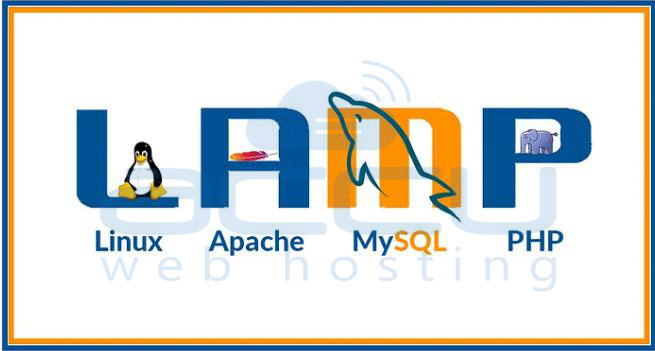LAMP Stack vs. MEAN Stack: Which Web Development Stack is Right for You
If you want to make a website or web app, deciding which tools to use can be hard. LAMP Stack and MEAN Stack are popular ways for web developers to build things fast and cheaply. But, do they both work the same? What makes them different? Which one should you pick?

To help you decide between LAMP Stack and MEAN Stack, we’ll explain these two methods and how they are not the same. This way, you can choose the right one for your next project!
Let’s begin!
LAMP Stack Overview
The LAMP Stack is a set of free software tools that work together to make websites and apps. LAMP stands for Linux, Apache, MySQL, and PHP. Using LAMP, you can quickly create websites without spending much on software.

People usually use LAMP on Linux servers, but you can also use it on Windows with tools like VirtualBox or Parallels Desktop. If you’re not comfortable with using commands, installing LAMP on your Mac can save you time.
Benefits of Using LAMP Stack
Here are some good things about using LAMP:
-> It supports different programming languages and databases.
-> LAMP uses lightweight tools that are easy to install.
-> It comes pre-configured, so you don’t have to spend a lot of time setting it up.
-> It works well with popular website builders like WordPress or Drupal.
Cons of Using LAMP Stack
Here are some not-so-good things about using LAMP:
-> You need time to learn how to use it.
-> Your skills will mostly focus on Linux, Apache, MySQL, and PHP.
-> Some people find it hard to switch between different LAMP systems or have issues with certain platforms, especially when using WordPress.
MEAN Stack Overview
The MEAN Stack, which includes
is widely used in web development because it’s flexible, easy to use, and can handle big projects.

This stack makes it simple to add advanced features like chat, live streaming, and social sharing to your projects with just a few lines of code. If you know how to code, it’s a great choice for creating powerful apps with less effort.
Benefits of Using MEAN Stack
Here are some good things about using MEAN:
-> It uses JavaScript, which has lots of tools for databases and more.
-> Creating an API is easier with NodeJS and Express than with PHP.
-> It can handle a lot of user requests without overloading the web server.
-> Working with remote data sources, like databases and APIs, is easier with MEAN than with LAMP.
Cons of Using MEAN Stack
Here are some not-so-good things about using MEAN:
-> MEAN Stack’s components (NodeJS, Angular, MongoDB) are specifically chosen to work together, limiting your database choices.
-> You need to learn multiple frameworks (Express, Koa, Hapi) to use MEAN, and each has its own quirks.
-> For the database, you have to use more advanced tools like PostgreSQL and MariaDB instead of simpler ones like SQLite, which might be challenging for beginners.
Choosing Between LAMP Stack and MEAN Stack: Which One is Better for Web Development?

Let’s look at a few things to help you decide whether to use LAMP Stack or MEAN Stack for your web development.
1. High-Performance:
LAMP Stack is usually faster than MEAN Stack because of the database used (MySQL vs MongoDB).
LAMP Stack is better if your project needs a lot of computing power or heavy database operations.
2. Flexibility:
LAMP Stack is more easily customizable than MEAN Stack.
It’s simpler to scale LAMP Stack up or down based on your needs while scaling down MEAN Stack can be a bit difficult.
3. Cost-Efficiency:
LAMP Stack development is generally cheaper than MEAN Stack.
Even cloud hosting on LAMP Stack is less expensive than a single node on AWS.
LAMP Stack’s modularity makes data security management easier.
4. Community Support:
LAMP Stack, being open source, has strong community support.
MEAN Stack is a closed source owned by Microsoft and lacks community feedback.
5. Security & Data Encryption:
LAMP Stack prioritizes security with SSL/TLS encryption, preventing data hacking during transmission.
It can also prevent XSS attacks and SQL injections.
MEAN Stack lacks encryption and security features, making LAMP Stack a better choice for data protection.
In summary, if you value high performance, flexibility, cost-efficiency, community support, and strong security with data encryption, then LAMP Stack might be the better option for your web development compared to MEAN Stack.
Conclusion:
In conclusion, the choice between LAMP Stack and MEAN Stack depends on your specific needs. If you prioritize high performance, flexibility, cost-efficiency, strong community support, and robust security with data encryption, then LAMP Stack is likely the better fit for your web development.
On the other hand, if you prefer a stack that excels in certain areas like real-time applications and a JavaScript-centric development approach, MEAN Stack might be more suitable. Consider your project requirements and preferences to make an informed decision for successful web development.